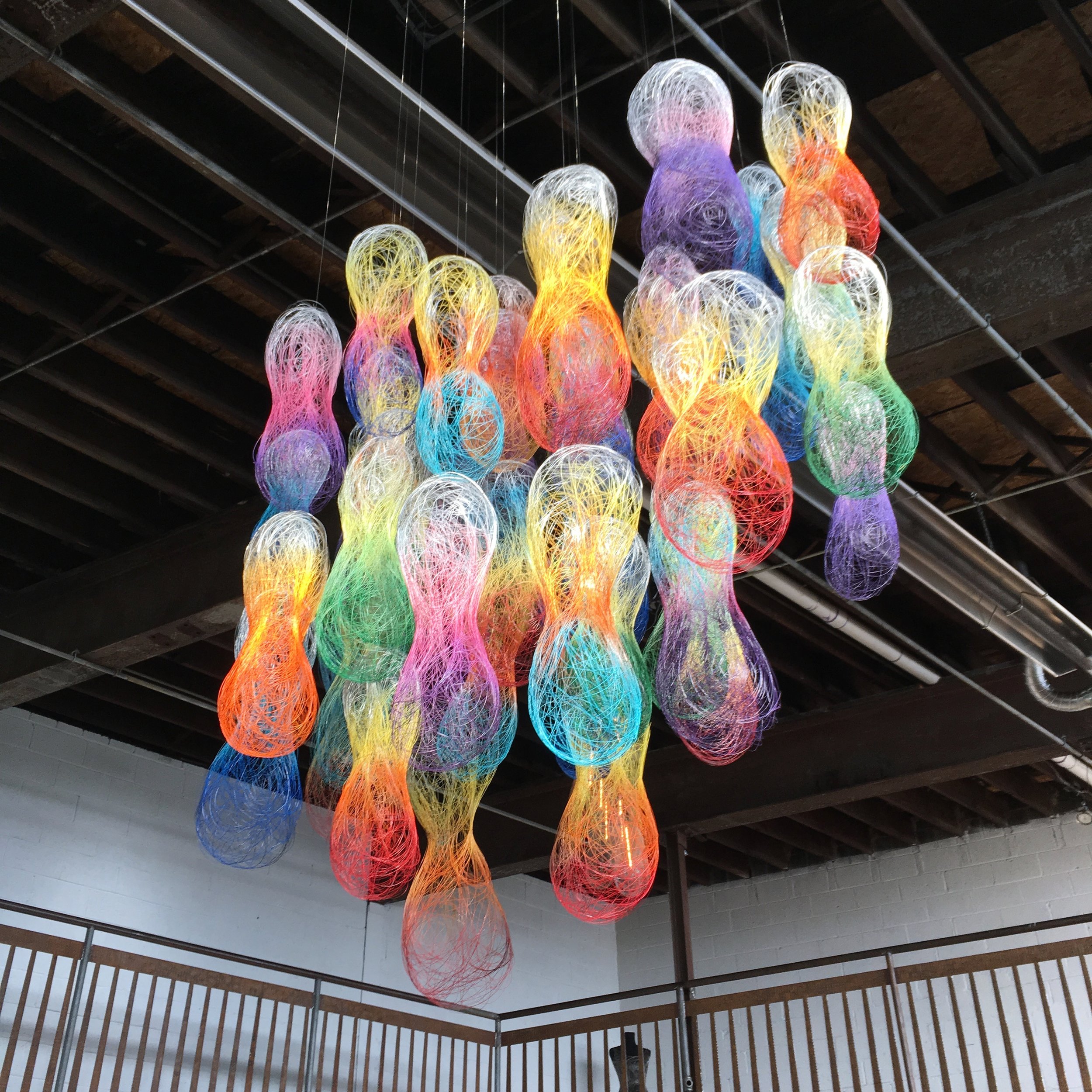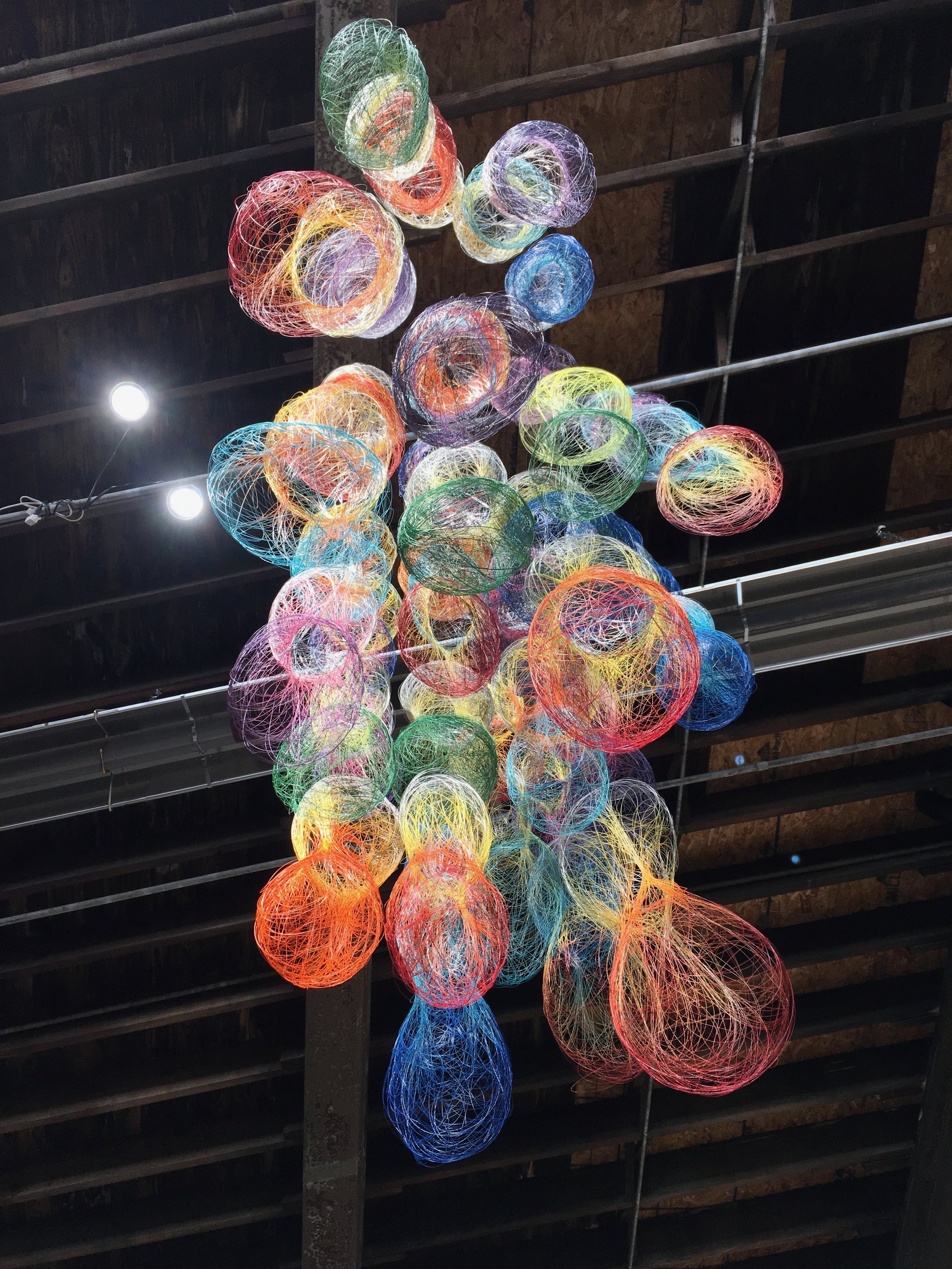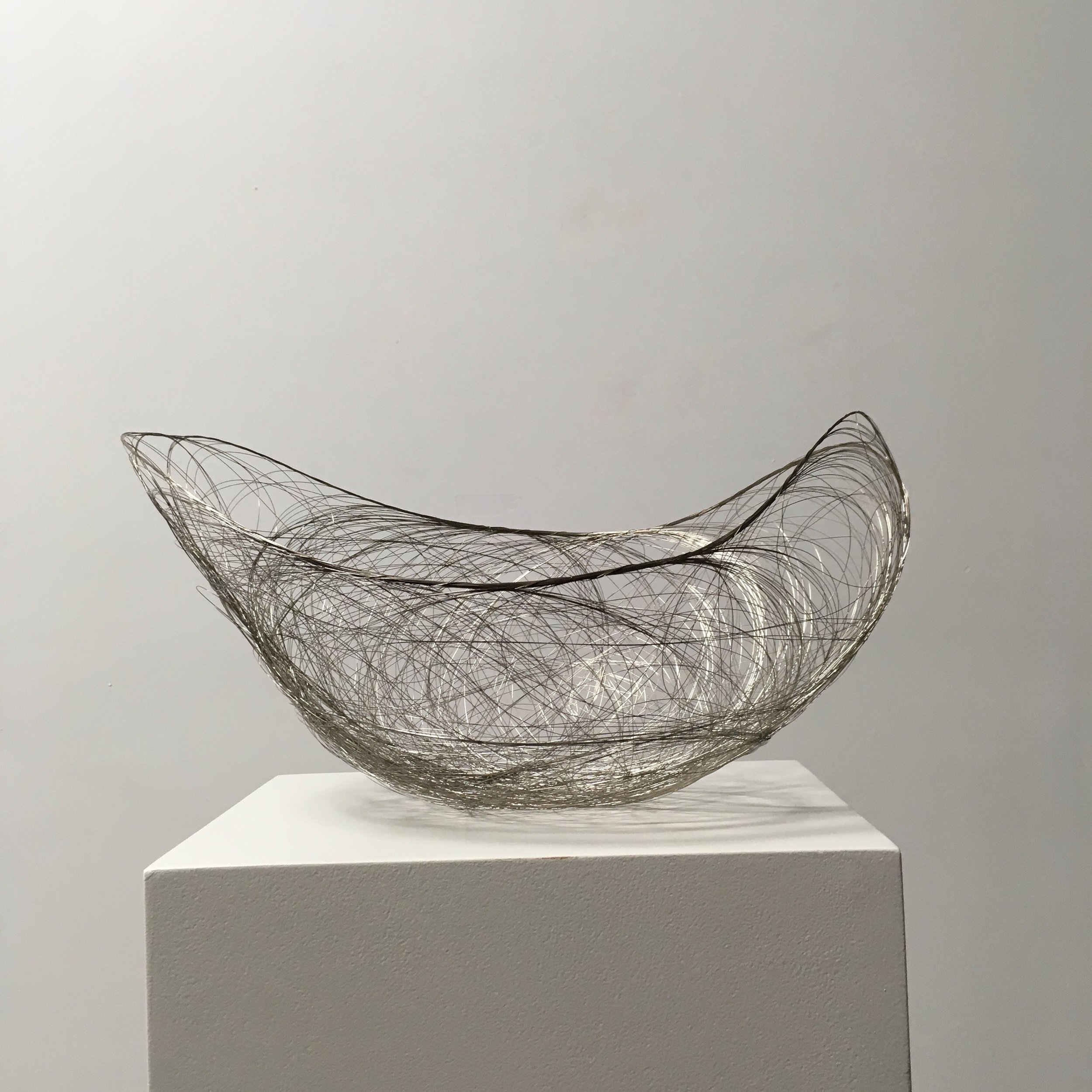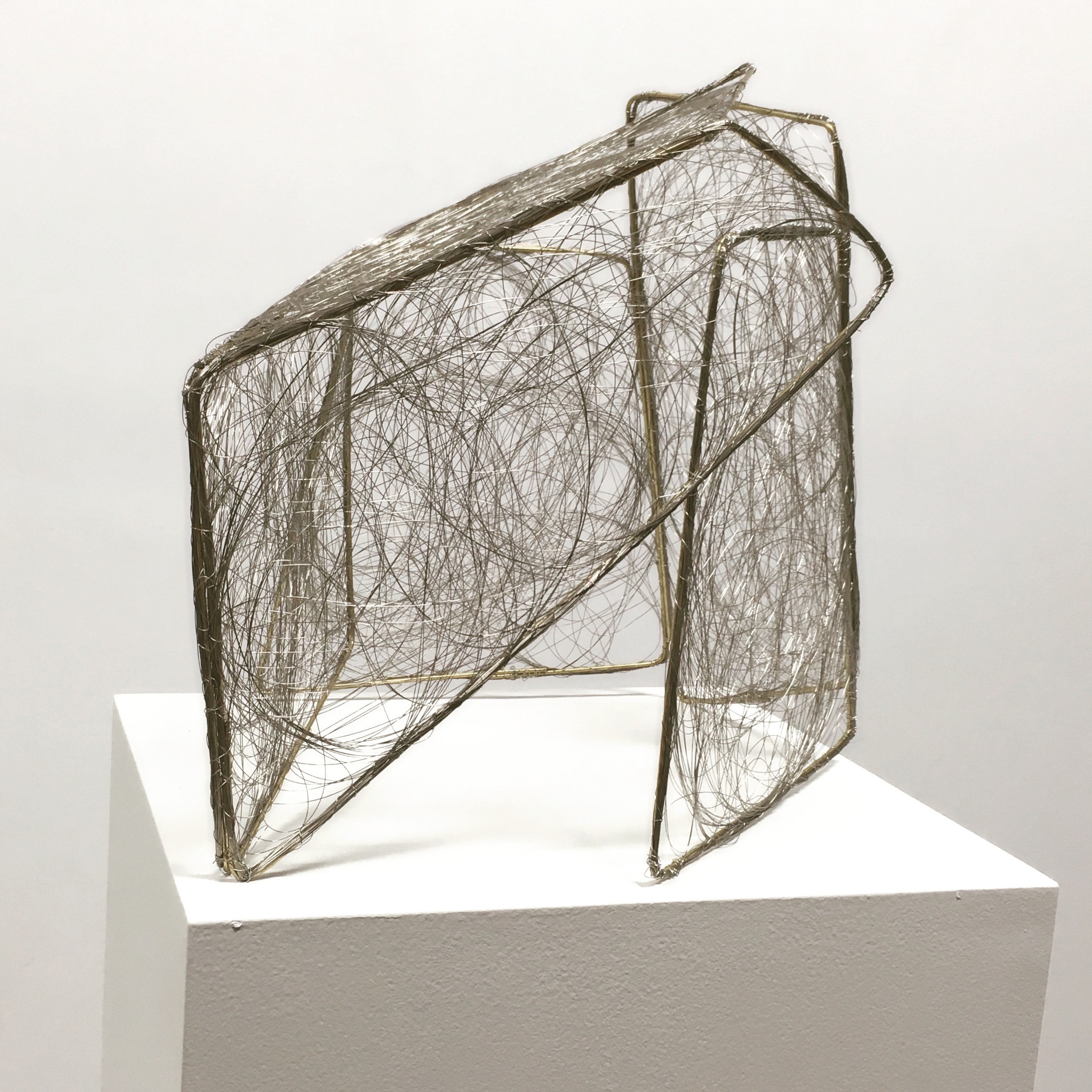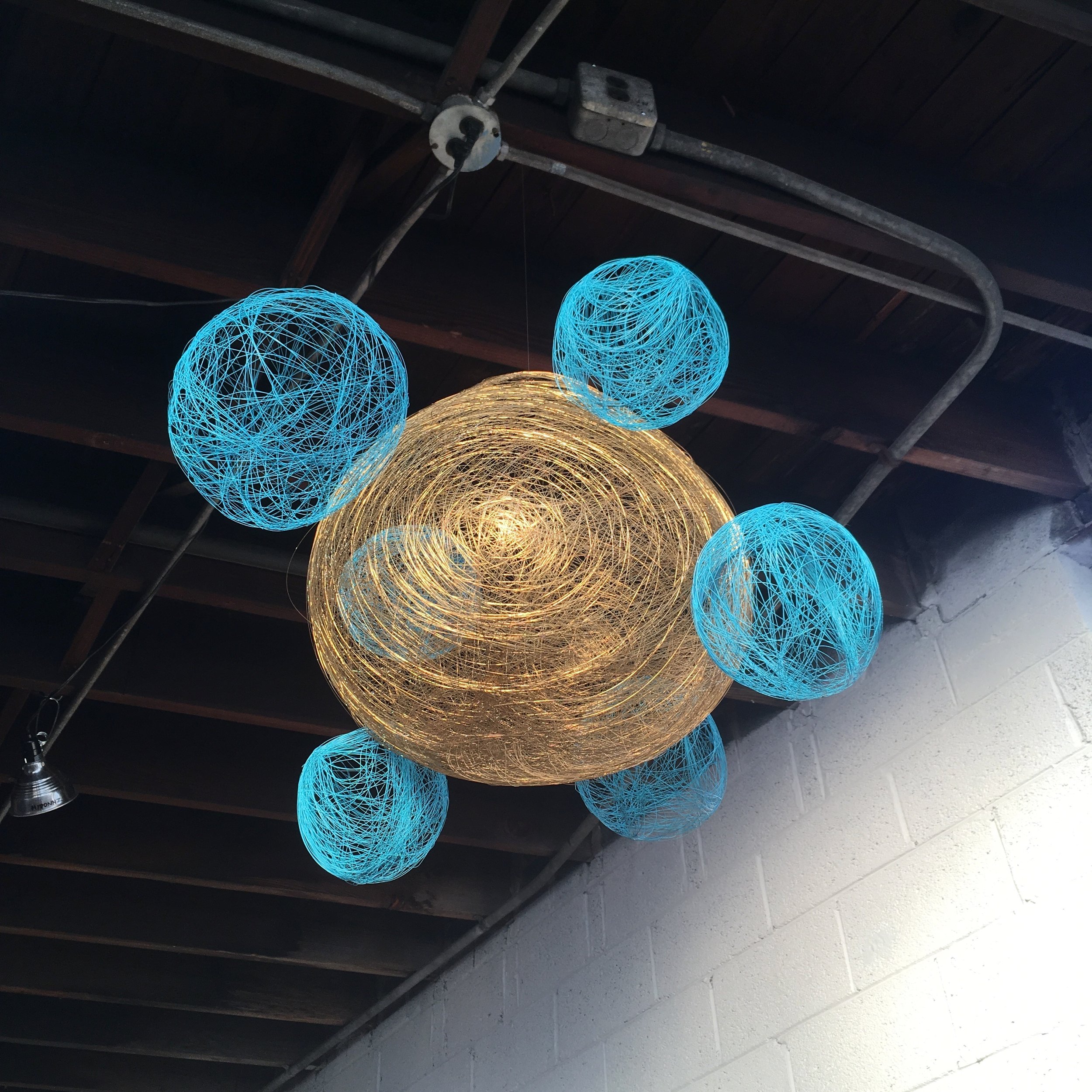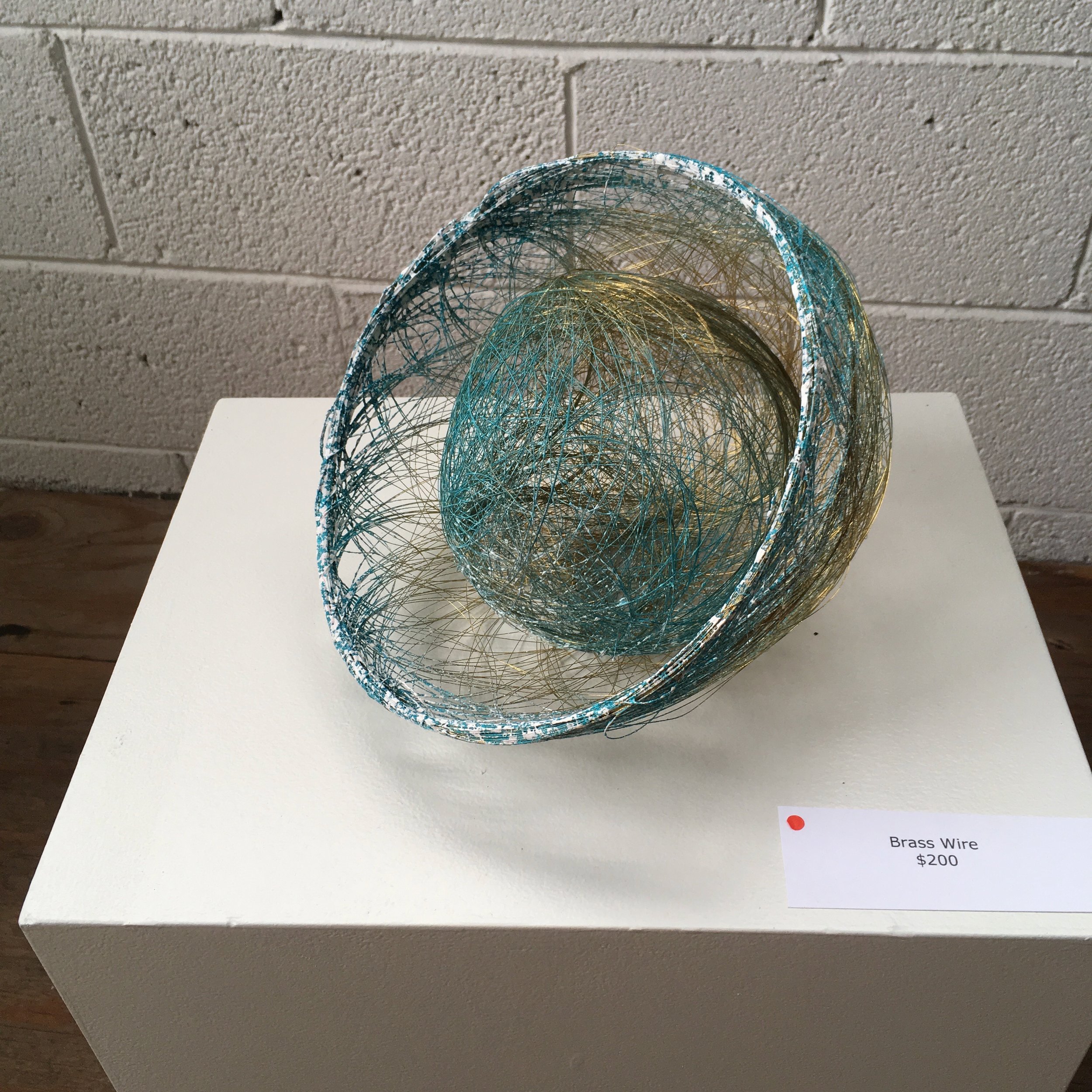The brass wire these lamp shades are made from is used in a process called electrical discharge machining (EDM), also called die sinking, or wire erosion. The wire itself does not do the cutting; it's the small electrical explosion (my words) that occurs when the positively charged wire comes in contact with the negatively charged metal part that needs to be cut. These cuts can be very small and precise, and it all occurs in a bath of water. Who knew?
The silver wire is brass electroplated with zinc. I became interested in working with EDM wire because even though it can become tangled, the tangle is manageable and somewhat predictable due to various unique properties. Even so, it’s not the easiest stuff to work with. And although the artist in me ran wild with some of these first lamps, I also wanted to create easily repeatable designs.
One day while I was at the metal recycling center I found several huge boxes full of silver and yellow brass EDM wire. I had no idea what it was but as I moved the tangled mass through my hands I realized it had some very unique qualities I’d never seen in wire, before. No matter how tangled it got, for instance, it always wanted to lay in a horizontal plane. That is, it lays flat under its own weight. And when it bends it wants to hold a certain radius without kinking. When it does kink it becomes very weak and breaks — low tensile/sheer strength — but has very strong linear properties. And, of course, it shines.
